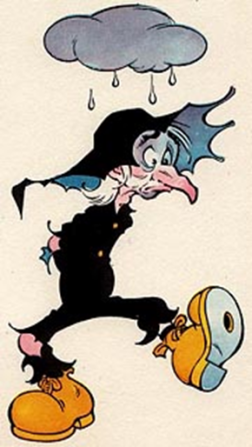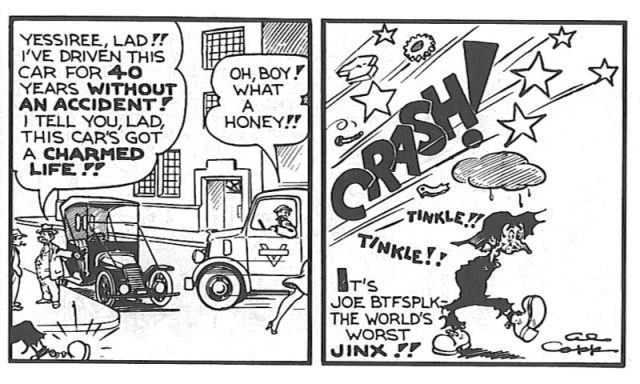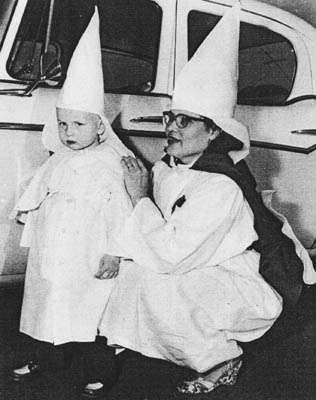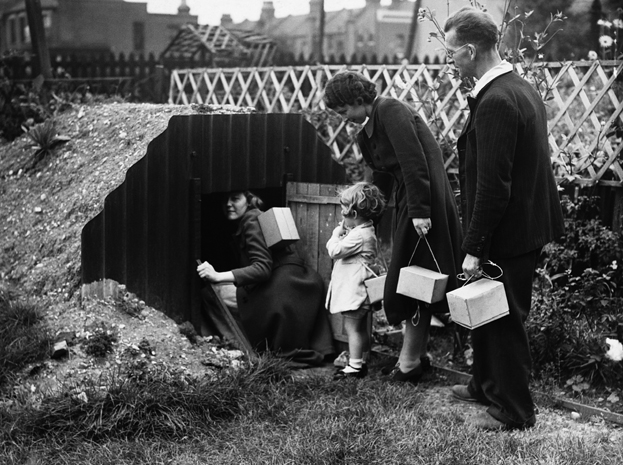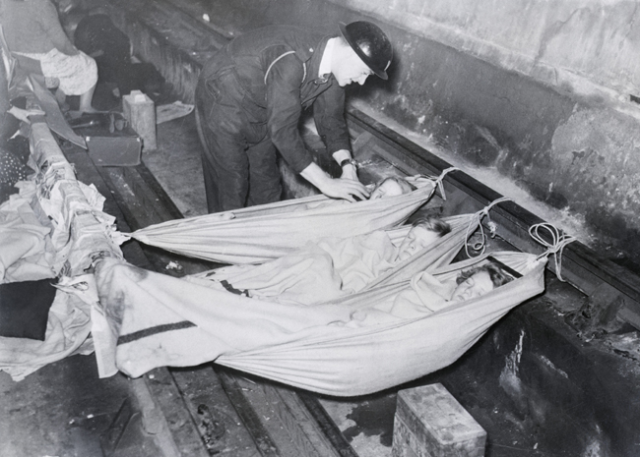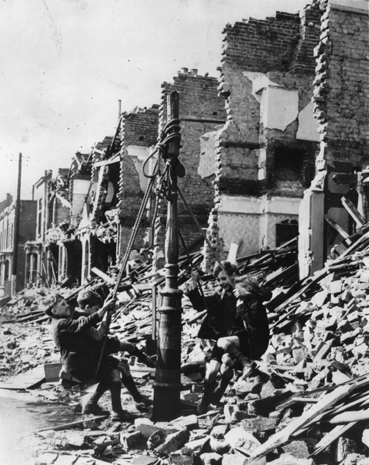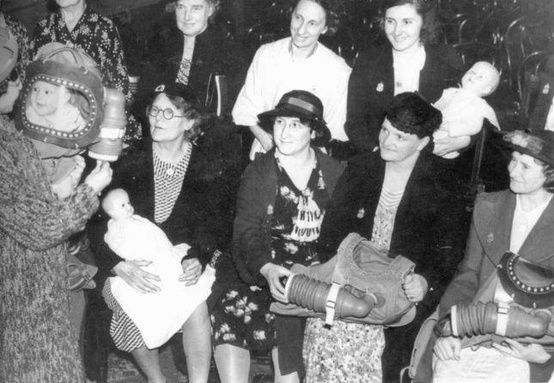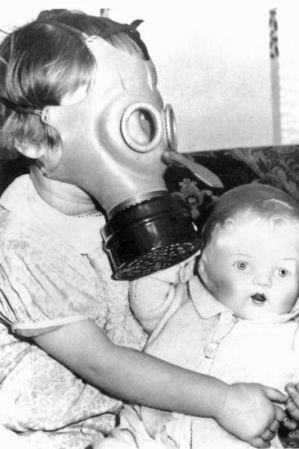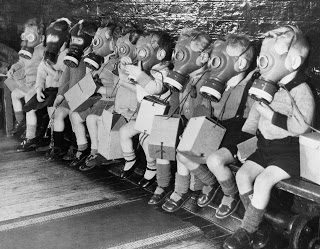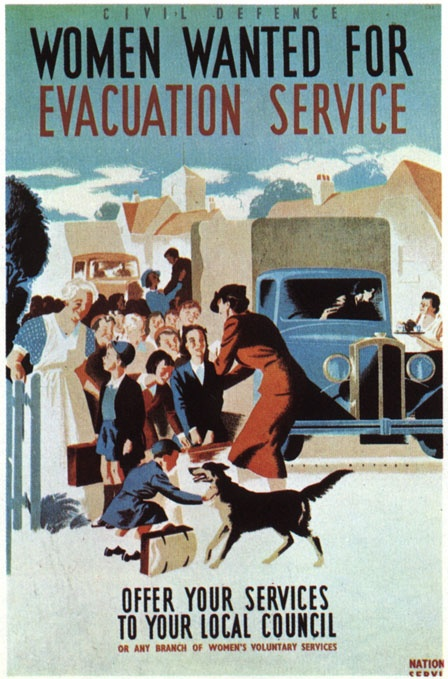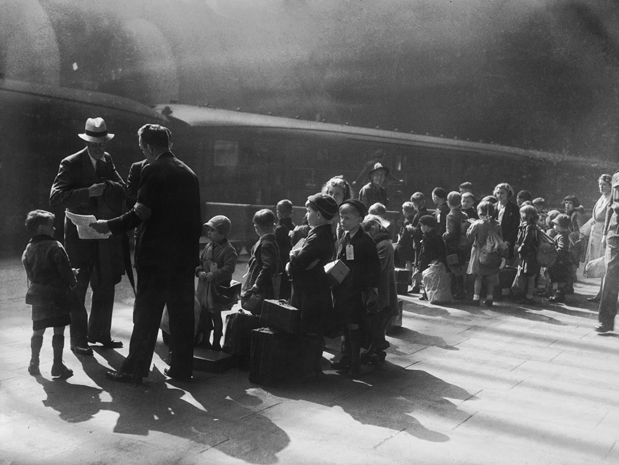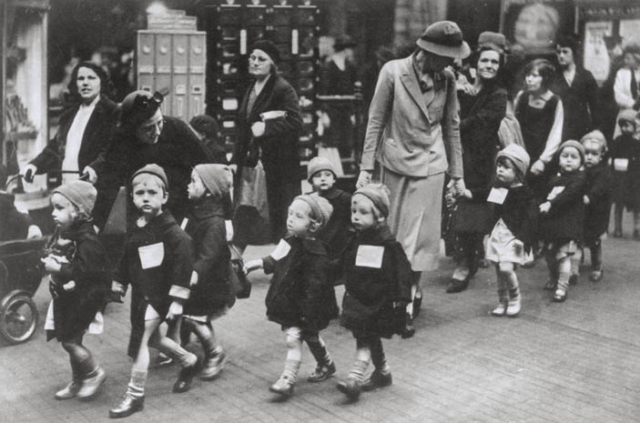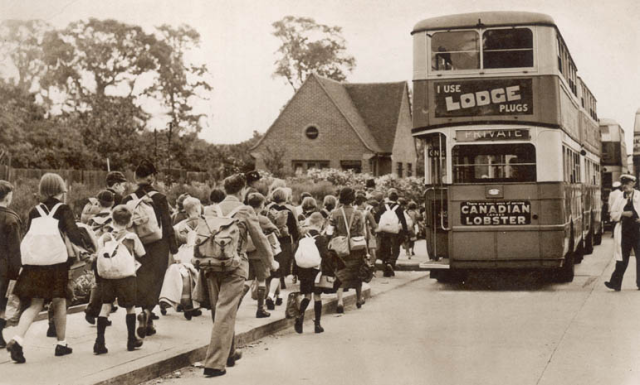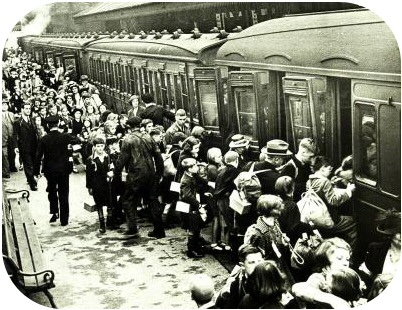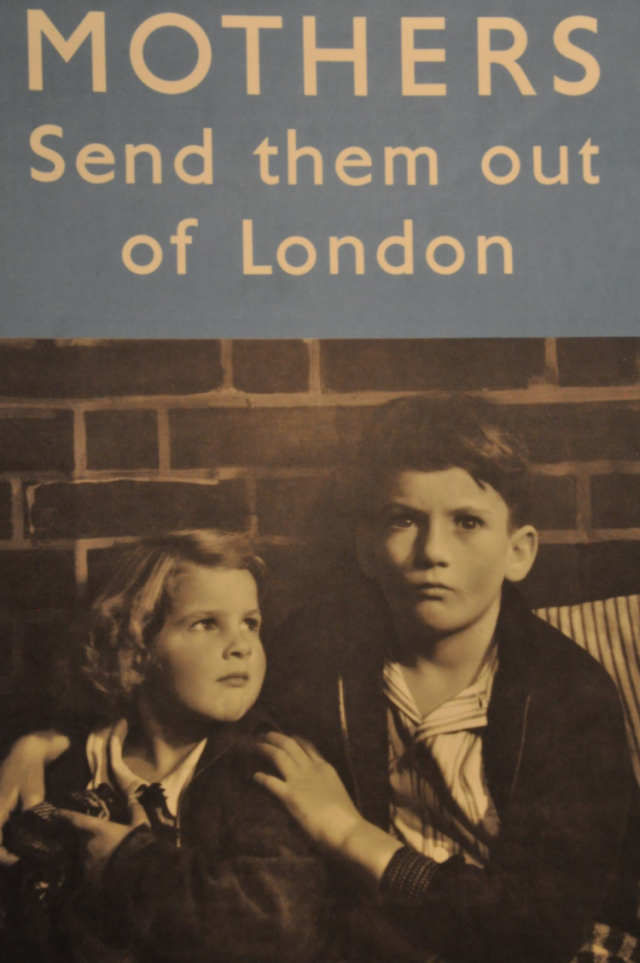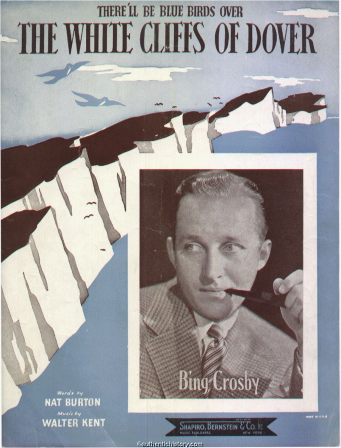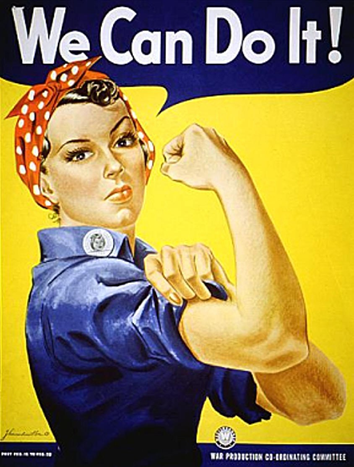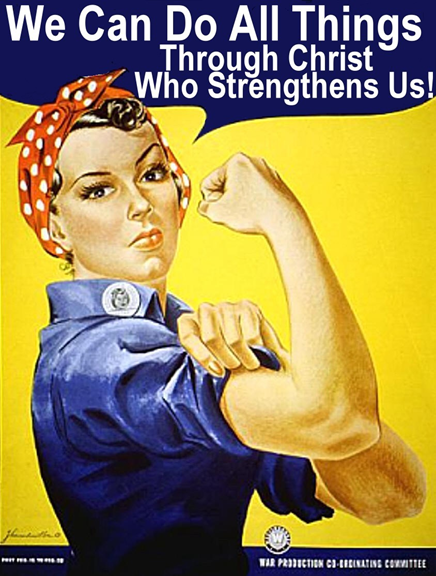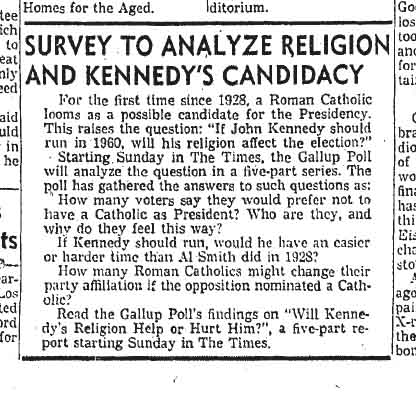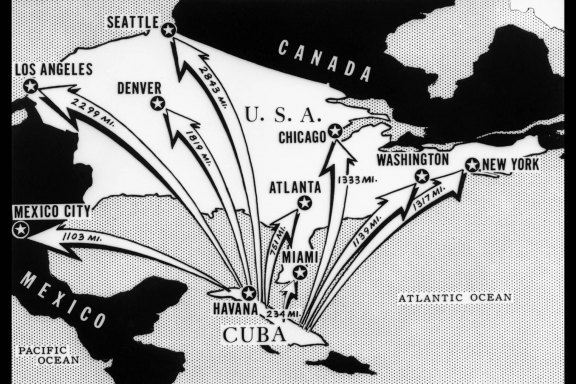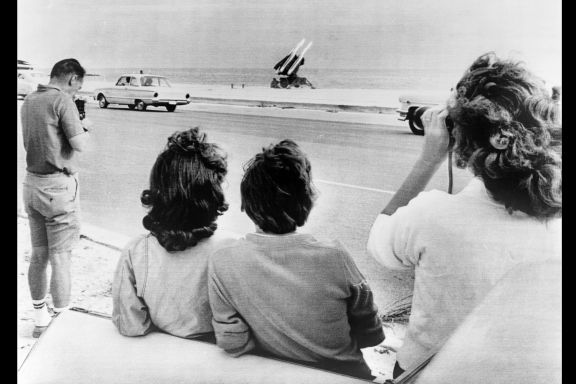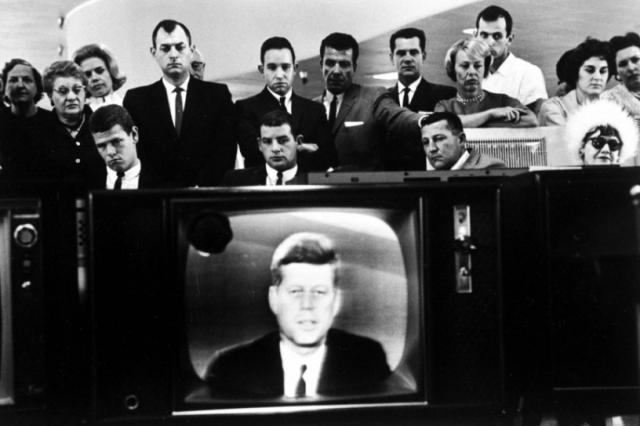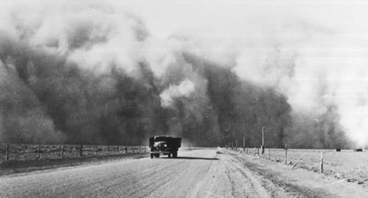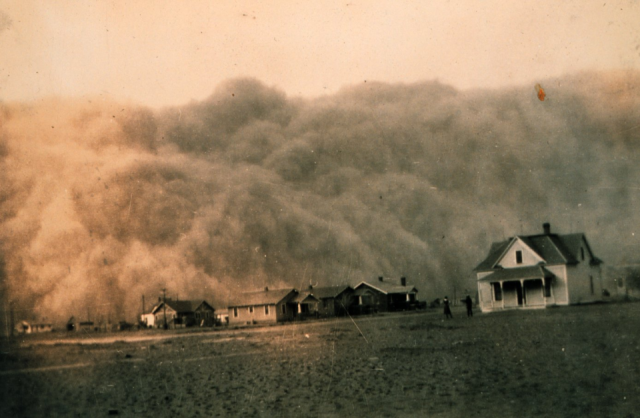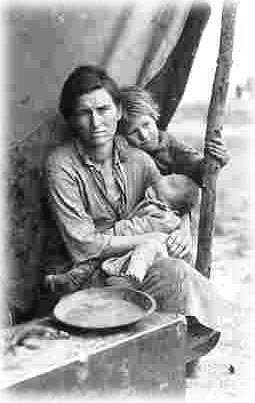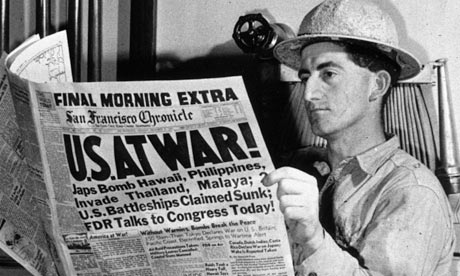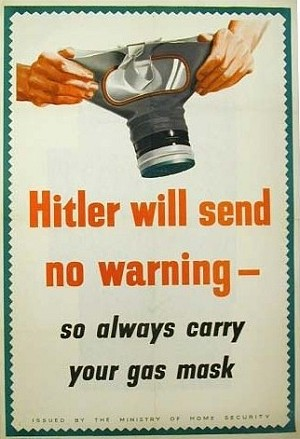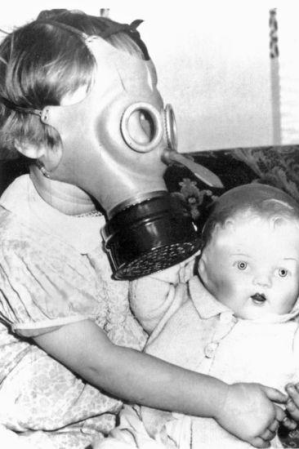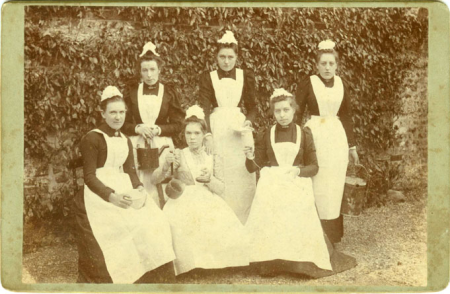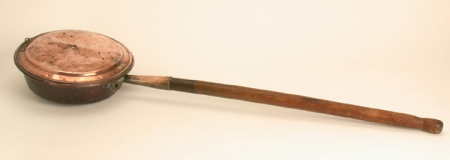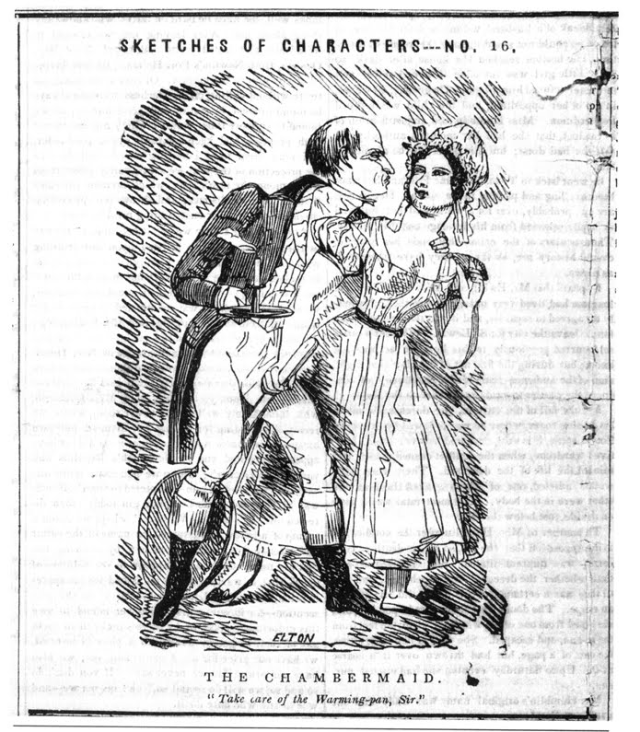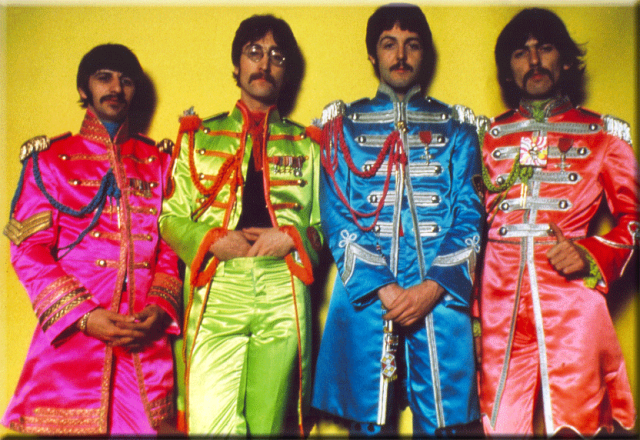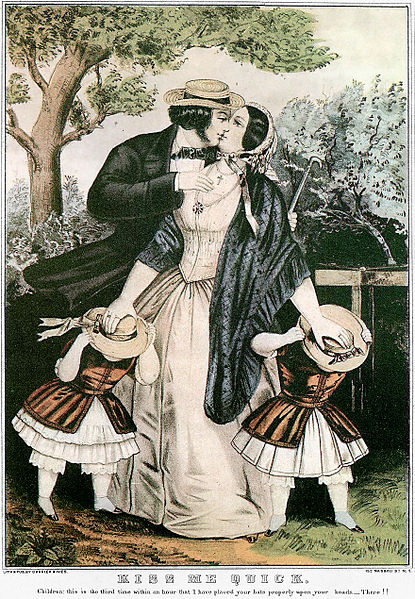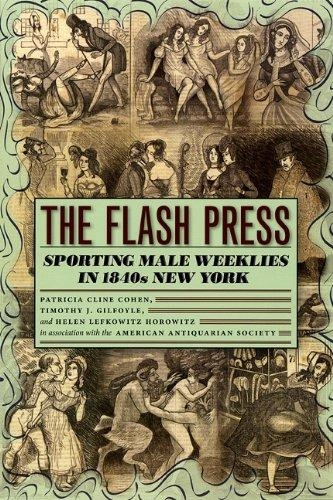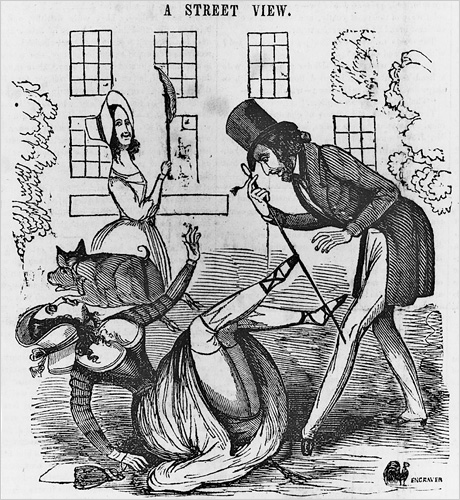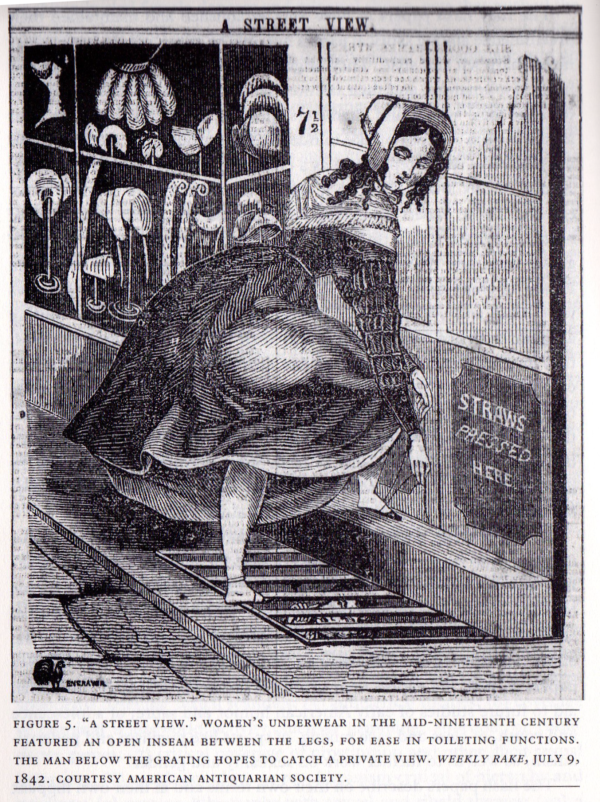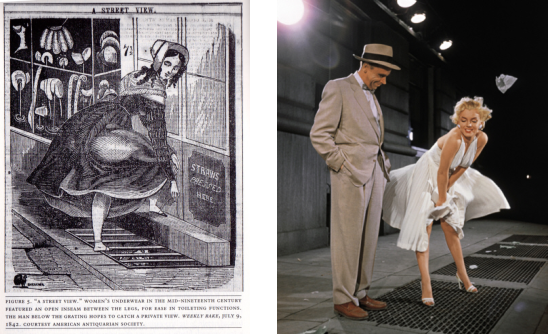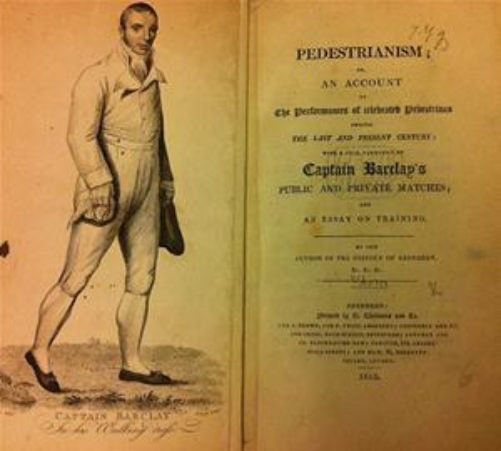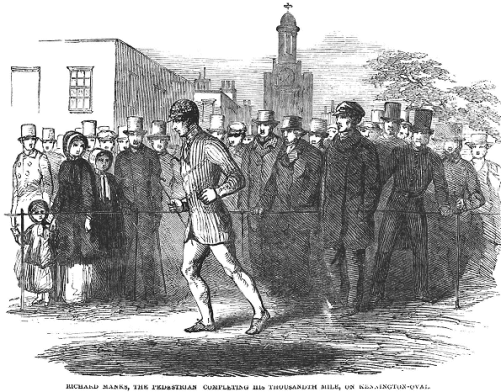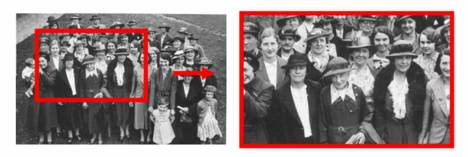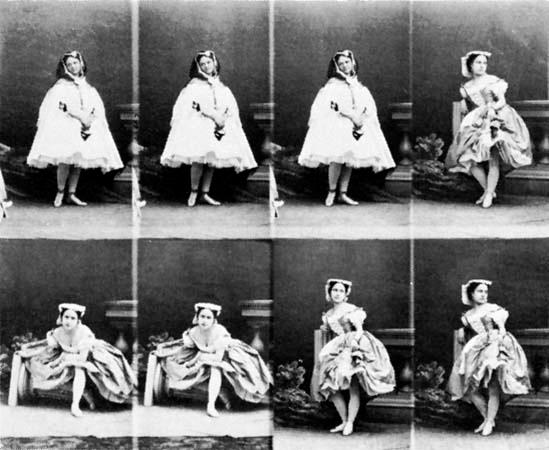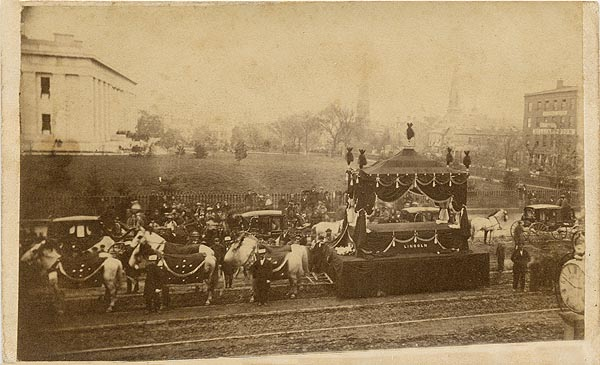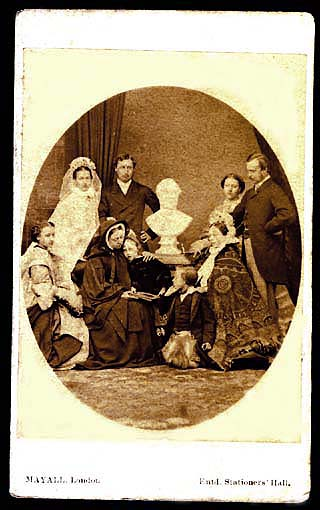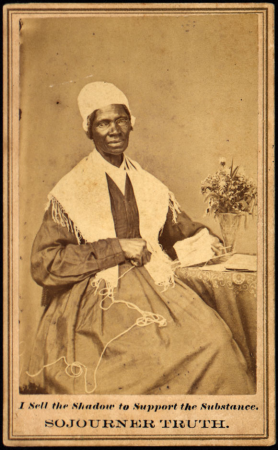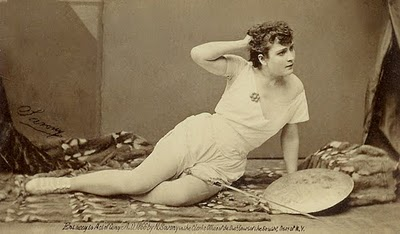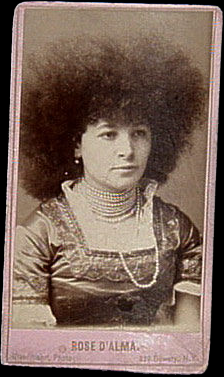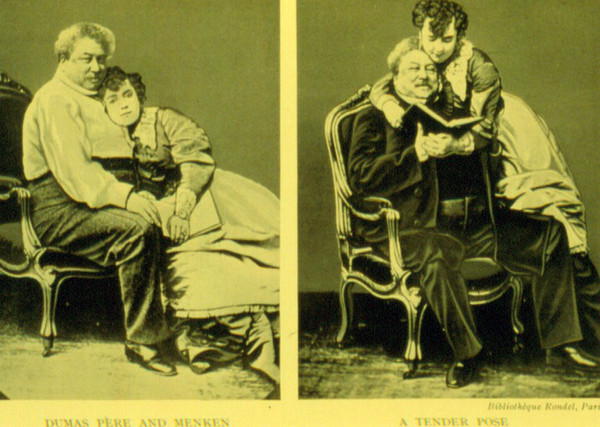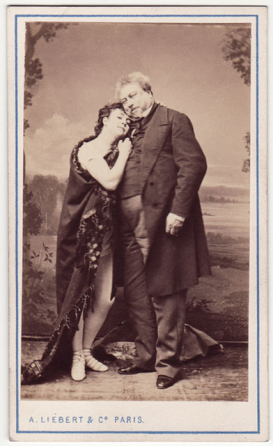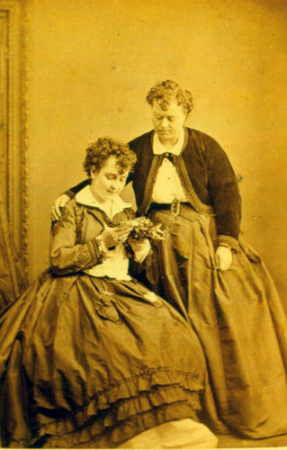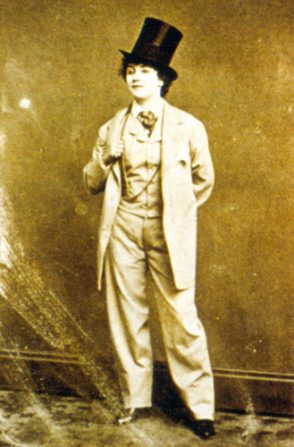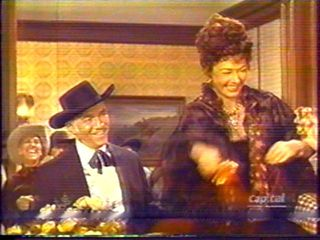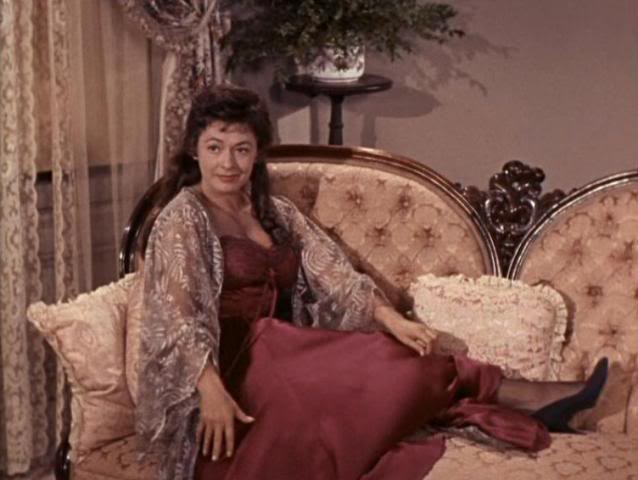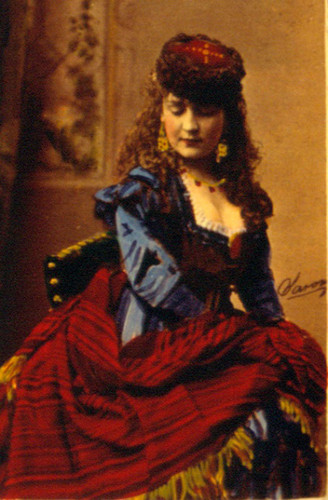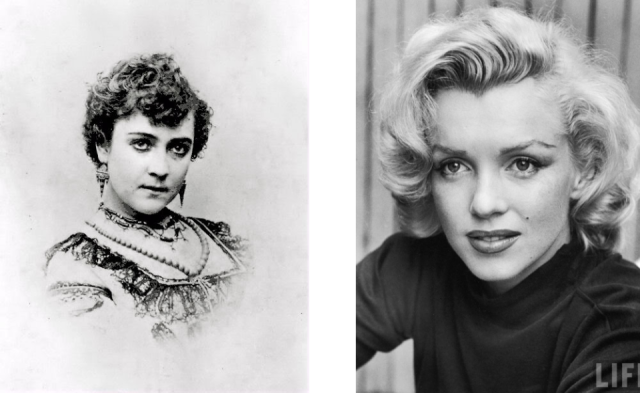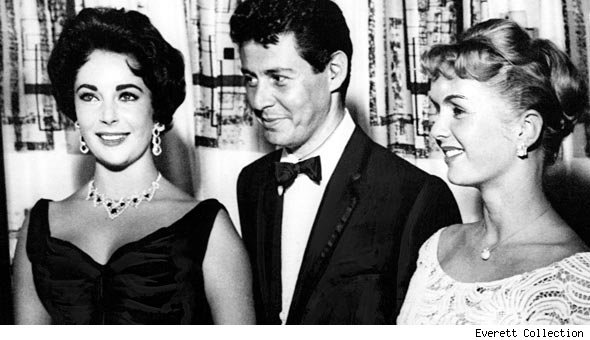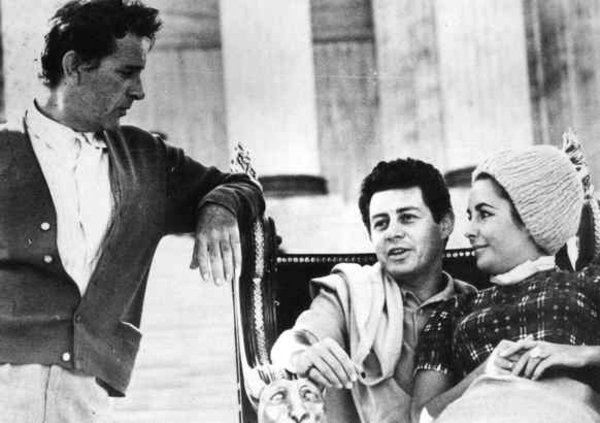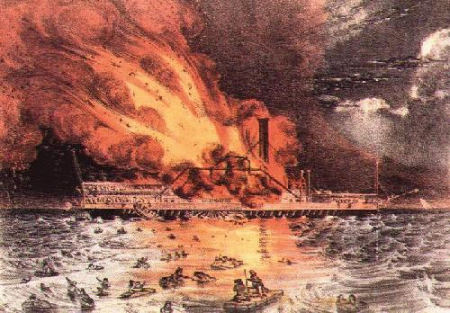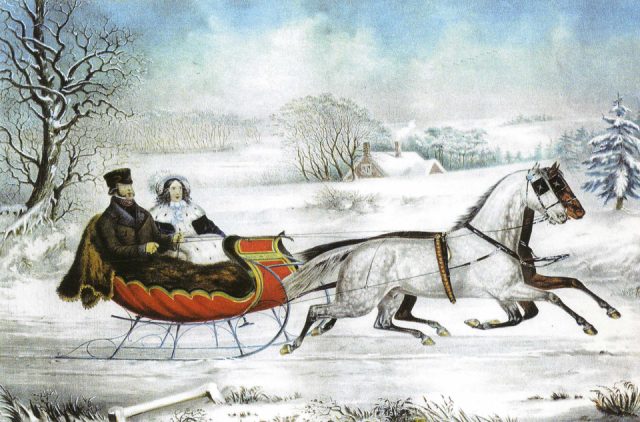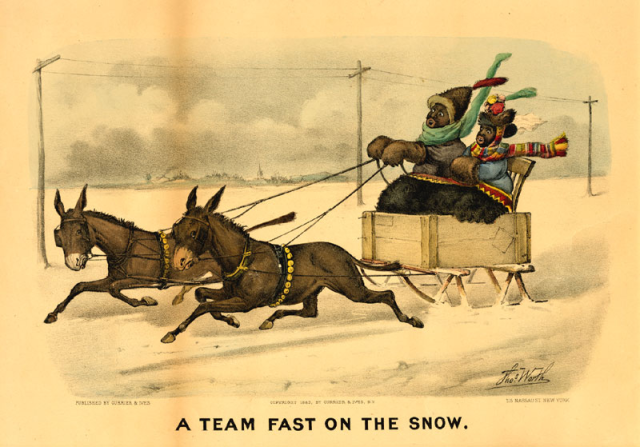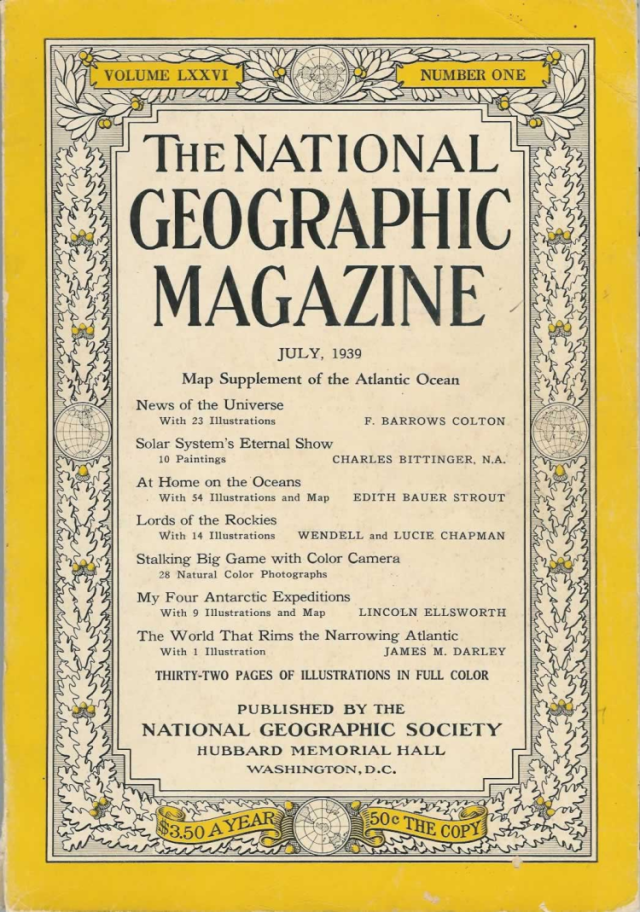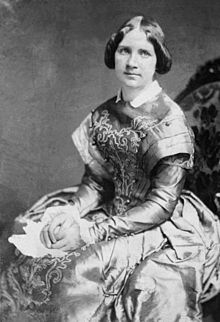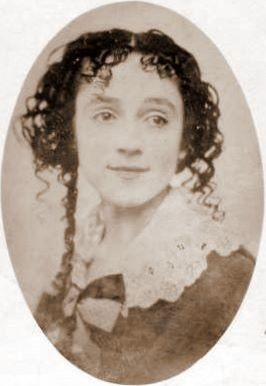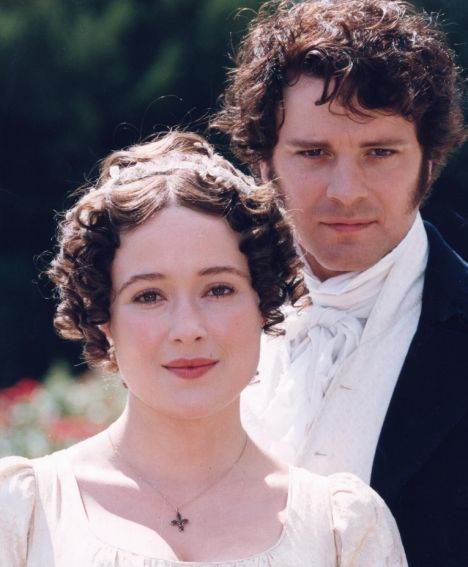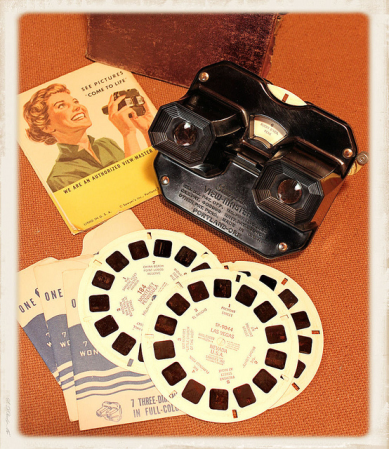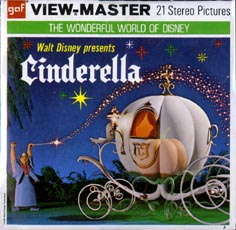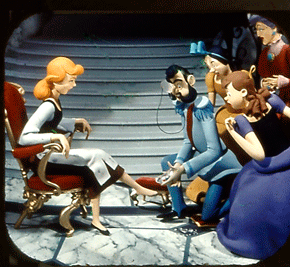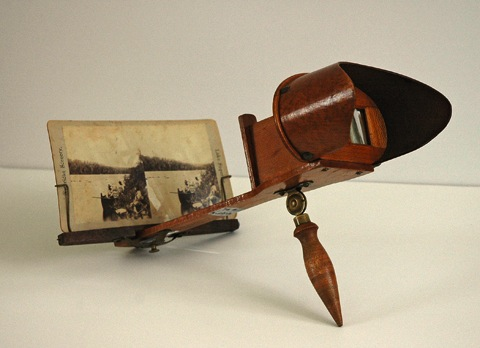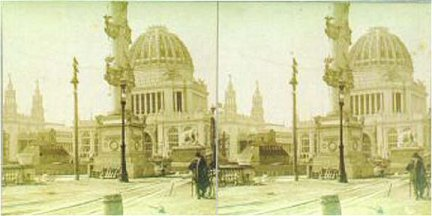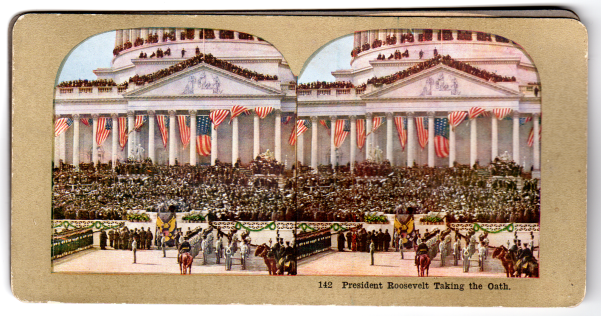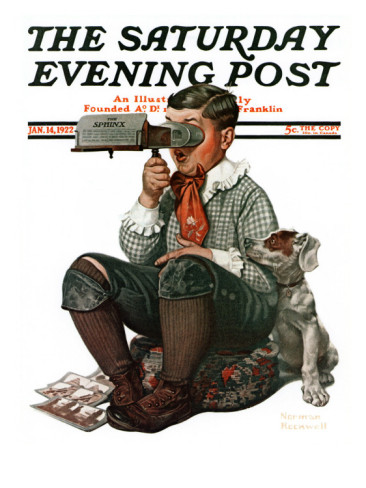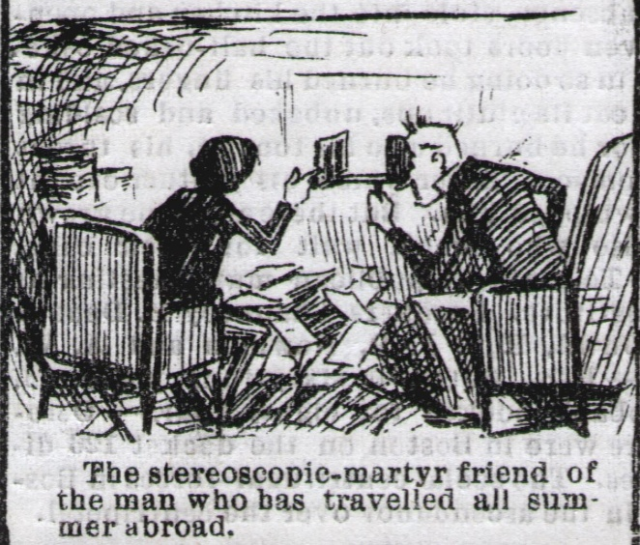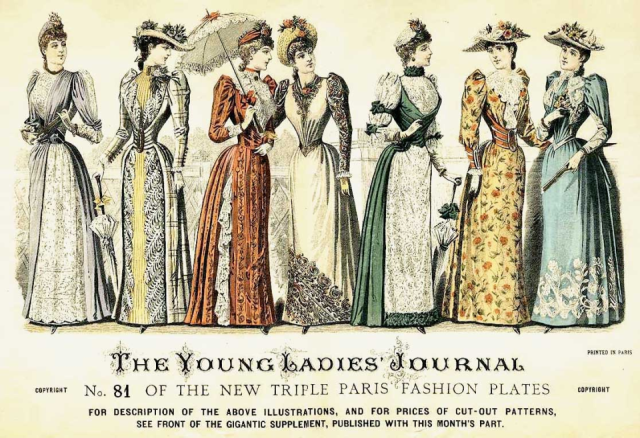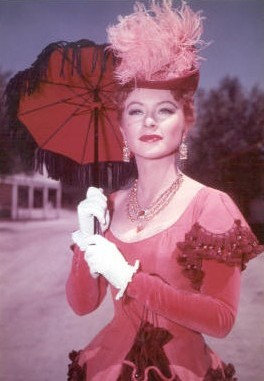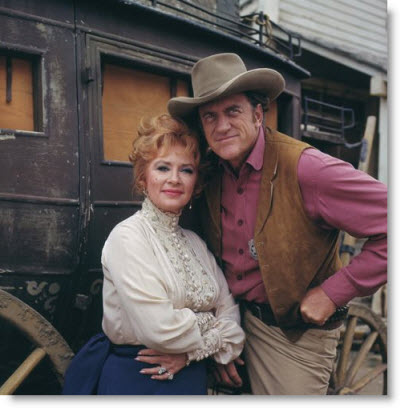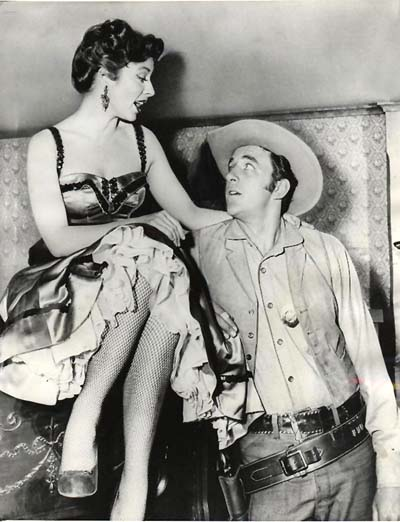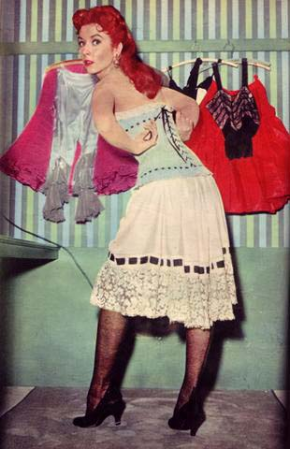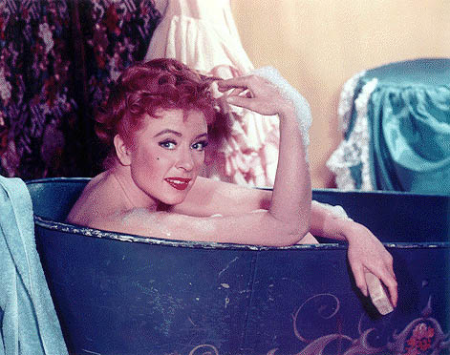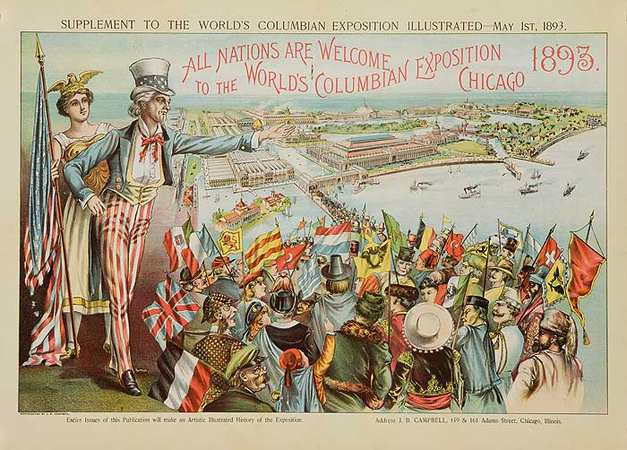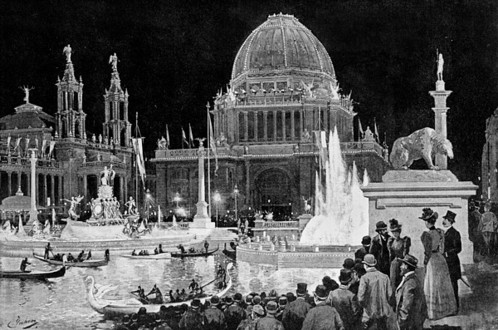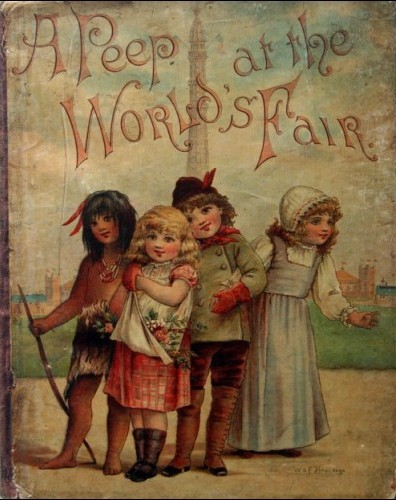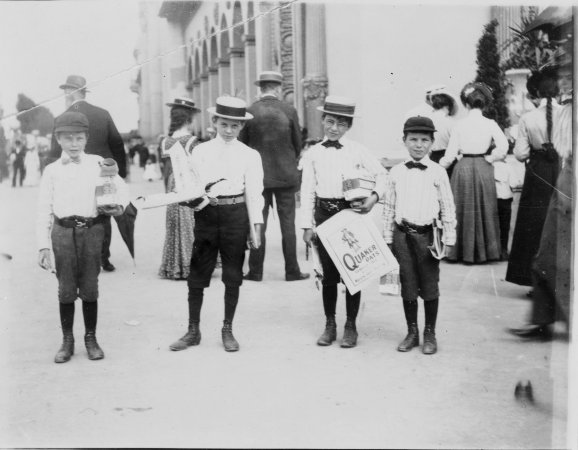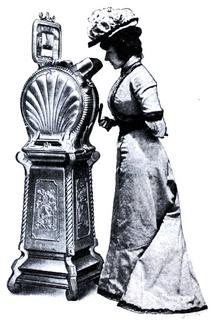Painting a Rosy Past: Part 9
Colonial Hanky-Panky
(Click here to go to the Introduction to this series.)
Sex and the Single Puritan
From: LA Times, 8/22/2012
Thomas A Foster
Rep. Todd Akin, the GOP’s candidate for U.S. Senate in Missouri, caused a huge stir the other day with his comments about how women who are true rape victims rarely get pregnant.
“If it’s a legitimate rape,” he said, “the female body has ways to try to shut that whole thing down.”
In a piece that was typical of the widespread outrage the remarks stirred, the Atlantic magazine called them the “contemporary equivalent of the early American belief that only witches float.”
The writer was onto something important. Akin’s ideas truly do date back to the colonial era.
In those days, prior to modern medical understanding of conception, women were considered to be “more amorous” than men, and it was believed that both partners needed to have orgasms in order for conception to occur.
Nicholas Culpeper’s 17th century midwife manuals espoused that it was a woman’s “womb, skipping as it were for joy” that produced “in that pang of Pleasure” the “seed” needed for conception to occur. If both husband and wife were not properly in love and enjoying sex, conception would fail, he asserted, because “the woman, being averse, does not produce sufficient quantities of the spirits with which her genitals should normally swell.”
Although many women in early America undoubtedly knew that orgasm was not required for pregnancy to occur, many women also embraced the two-seed theory of reproduction.
Jane Sharp’s 17th century manual, for example, explicitly discussed the clitoris, and described it as the location for women’s physical sexual pleasures and the key to women’s ability to conceive. “By the stirring of the Clitoris,” she wrote, “the imagination causeth the Vessels to cast out that Seed that lyeth deep in the body.”
Such notions of fertilization could have profound implications for women who sought justice after rape resulted in pregnancy. As historian of rape in early America Sharon Block has shown, colonial courts were notoriously suspicious of women who brought rape accusations. Women were seldom taken at their word and the status of the accused and the accuser became central to the outcome of the case. Moreover, a recurring theme in newspapers of the era was that that men needed to protect themselves against women — “the cunning sex” — who were out to falsely accuse them of rape.
Women who bore the added burden of pregnancy as a result of rape might come under special criticism in an already skeptical legal and social setting. Given the understanding of conception outlined above, if a woman became pregnant as the result of rape, consent would be assumed. Newspapers in early America routinely mocked women who dared to speak about rape and sexual assault by implying that they had wanted the sexual contact.
Indeed, the idea of women as bewitching seductresses was common in early America. In 1759, a woman named Anna Donham was brought before the Plymouth General Session for having had “a wicked and diabolical intent to corrupt and debauch” the local men, inciting them “to commit fornication and adultery.” She was fined and sentenced to public lashing, but the men who enjoyed her company were not accused of any crime. [Article from LA Times]
I don’t know about later generations, but in my Boomer generation The Scarlet Letter was required reading in high school English in the 1960s. So we all knew that indeed some Puritans had sex…and sometimes outside marriage. But I guess I always assumed that, other than for the purpose of a married couple producing children to work the farm, it was an extremely rare occurrence. Those prissy, dour faces in the pictures of Puritans—and all that stuff about executing witches!—sure seemed to indicate a very uptight existence. Who would have guessed they had sex manuals?!
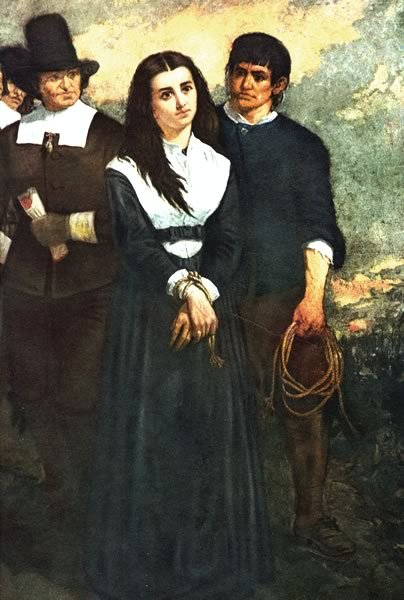
In this series on Are You Prepared…? we have been exploring American history to see if we can find a Pure Period we could “go back to” if we had a time machine, so we could escape from this 21st century society that so many Christians seem to think has totally deteriorated from a pure American past. Surely, so many say these days, Jesus must return in our generation because we have fallen so far—why, the whole society is no better than Sodom and Gomorrah. Not like the earlier generations of Americans, who, except for a few reprobates, were clean-thinking, morally upright, and noble.
But as we’ve sorted back through the previous generations of our forebears, it has been impossible to spot even one such generation, let alone several. Yes, there have always been noble, godly people scattered through society. But that is true today also! The truth is, human nature in general has changed not one whit over the centuries in this country. For instance, more effective methods of communication—mass-production printing, radio, TV, the Internet—have indeed increased the availability of pornography, but the desire for pornography has always existed, from ancient times. And men have always taken advantage of whatever was available to them in any generation. In America as elsewhere in the world.
The first commercially successful photo process, the daguerreotype, was patented in 1839. The first picture successfully produced by the method was a still life of plaster casts, a wicker-covered bottle, a framed drawing, and a curtain. Yes, the process was promptly used for formal portraits … one of Abe Lincoln from 1846 is still extant, and a pic of an even earlier one, 1844 or 1845, of Andrew Jackson, is on the net. But it was equally almost instantly pressed into service to make pornographic photos. I don’t know when the first one was shot, but there is a copy of one on the Net from 1848—less than a decade after the patent—of a totally naked woman lying on a bed sexually fondling another totally naked woman. And daguerroporn goes downhill from there.
By the time of the Civil War the paper printing photo process had been invented, and such pornography could be mass-produced. And, as mentioned in earlier blog entries, mass-delivered to lonely Yanks and Rebels in military camps all over the country.
But—Puritan New England? Colonial Virginia? Surely the generation of the Founding Fathers, and their forebears going back to Plymouth Rock, were a different breed. Surely we just haven’t gone back far enough, with the last blog entry that talked about the 1840s Flash Press. In fact, a fellow on a forum where I participate suggested just that. He admitted that this blog series had accurately portrayed the fact that there has been immorality—often rampant—in most generations throughout our history. But he was absolutely certain that the earliest generations, prior to 1800, really were utterly different. And it was from that high and lofty standard we had fallen.
Oh. O.K. Let’s see if we can establish that with facts.
Colonial New York was preeminently a seaport, and prostitution flourished in the streets and taverns close to the docks… New York, remarked John Watt in the 1760s, was ‘the worst School for Youth of any of his Majesty’s Dominions, Ignorance, Vanity, Dress, and Dissipation, being the reigning Characteristics of their insipid Lives.’ For much of the eighteenth century, ‘courtesans’ promenaded along the Battery after nightfall. On the eve of the Revolution, over 500 ‘ladies of pleasure [kept] lodgings contiguous within the consecrated liberties of St. Paul’s [Chapel].’ A few blocks north, at the entrance to King’s College (later Columbia University), Robert M’Robert claimed that dozens of prostitutes provided ‘a temptation to the youth that have occasion to pass so often that way.’” (Timothy J. Gilfoyle, PhD “The Urban Geography of Commercial Sex: Prostitution in New York City, 1790-1860”)
Virginia Sex Ways
A multiple standard of sexual behavior (not merely a double standard) appeared not only in the laws of Virginia but also in its customs. Women, especially gentlewomen, were held to the strictest standards of sexual virtue. Men, especially gentlemen, were encouraged by the customs of the country to maintain a predatory attitude toward women. A famous example was the secret diary of William Byrd II, an exceptionally full and graphic record of one planter’s very active sex life. [Byrd was a well-known Virginian plantation owner, investor, politician, writer, and surveyor, founder of Richmond, Virginia.]

In its attitude toward sex, this work was very different from any diary that was kept in Puritan New England. William Byrd was a sexual predator. Promiscuous activity was a continuing part of his mature life, and in some periods an obsession. With very mixed success, he attempted to seduce relatives, neighbors, casual acquaintances, strangers, prostitutes, the wives of his best friends, and servants both black and white, on whom he often forced himself, much against their wishes.
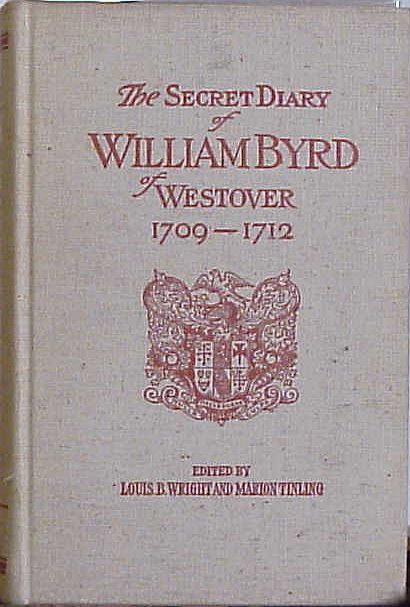
In the period 1709 to 1712, for example, when Byrd was more or less happily married, he was frequently engaged in sexual adventures:
2 [November 1709] I played at [r-m] with Mrs. Chiswell and kissed her on the bed till she was angry and my wife also was uneasy about it, and cried as soon as the company was gone. I neglected to say my prayers, which I ought not to have done, because I ought to beg pardon for the lust I had for another man’s wife.
It is important to note that the remorse he felt on this occasion had to mainly to do with his sense of violating another gentleman’s property. More often, he felt no remorse at all. Sometimes Byrd and his Virginia gentleman-friends went on collective woman hunts:
11 Mar. 1711. After church Mr. Goodwin invited us to dinner and I ate fish. Here we saw a fine widow Mrs. O-s-b-r-n who had been handsome in her time. From hence we went to Mr. B’s where we drank cider and saw Molly King, a pretty black girl.
20 [October 1711] Jenny, an Indian girl, had got drunk and made us good sport.
During this period in his life, Byrd’s sexual adventures were comparatively restrained. After his wife died, he sometimes engaged in this activity on a daily basis. An example comes from a visit to London in the month of September 1719:
8 September … saw two women, a mother and daughter who stayed about two hours and then came Mrs. Johnson with whom I supped and ate some fricasee of rabbit and about ten went to bed with her and lay all night and rogered her twice …
11 September … I wrote some English till nine and then came Mrs. S-t-r-d. I drank a glass of wine to our good rest and then went to bed and rogered her three times. However, I could not sleep and neglected my prayers….
14 … About eight I went to Mrs. Smith’s where I met Molly and had some oysters for supper and about eleven we went to bed and I rogered her twice …
17 … about seven I went to Mrs. FitzHerbert’s where I ate some boiled pork and drank some ale. About nine I walked away and picked up a girl whom I carried to the bagnio and rogered her twice very well. It rained abundance in the night. …
2 October … went to meet Molly H-r-t-n at Mrs. Smith’s in Jermyn Street where I went to bed with her and lay till 9 o’clock but could do nothing. Then we had chicken for supper and I gave her two Guineas and about twelve walked home and neglected my prayers …
16 October picked up a woman and went to the tavern where we had a broiled fowl and afterwards I committed uncleanness for which God forgive me. About eleven I went home and neglected my prayers.
20 October … to the play where I saw nobody I liked so went to Will’s and stayed about an hour and then went to Mrs. Smith’s where I met a very tall woman and rogered her three times …
In November, William Byrd and his English gentleman-friends were prowling in packs.
11 November, went with Lord Orrery to Mrs B-r-t-n where we found two chambermaids that my Lord had ordered to be got for us and I rogered one of them and about 9 o’clock returned again to Will’s where Betty S-t-r-d called on me in a coach and I went with her to a bagnio and rogered her twice, for which God forgive me …
Between “rogering” and forgetting his prayers, Byrd led a busy life. But, you may insist, he was no doubt just “the town rowdy” and not indicative of the colonial Virginia society of the time.
Sexual predators such as William Byrd have existed in every society. But some cultures more than others have tended to encourage their activities, and even to condone them. This was the case in tidewater Virginia, with its strong ideas of male supremacy and masculine assertiveness. William Byrd’s behavior differed only in degree from Thomas Jefferson’s relentless pursuit of Mrs. Walker, or George Washington’s clumsy flirtation with Mrs. Fairfax. These men represented the best of their culture; the sexual activities of other planters made even William Byrd appear a model of restraint. An old tidewater folk saying in Prince George’s County, Maryland, defined a virgin as a girl who could run faster than her uncle.
The sexual predators of Virginia found many opportunities among indentured servant girls during the seventeenth century. The journal of John Harrower described free and easy fornication with female servants in Virginia. Exceptionally high rates of prenuptial pregnancy and illegitimacy among English female immigrants to Virginia was in part due to this cause. There is evidence in the records that some masters deliberately impregnated their servants as a way of extending their indentures. …
The abolitionist indictment of slavery for its association with predatory sex had a solid foundation in historical fact. One thinks of Mary Boykin Chesnut’s response to the antislavery movement in the nineteenth century:
Like the patriarchs of old our men live in one house with their wives and their concubines, and the mulattoes one sees in every family exactly resemble the white children-and every lady tells you who is the father of all the mulatto children in everybody’s household, but those in her own she seems to think drop from the clouds…. You see, Mrs. Stowe did not hit on the sorest spot. She makes Legree [in Uncle Tom’s Cabin] a bachelor
Mrs. Chesnut knew whereof she spoke, and was haunted by her knowledge of sexual predators within her own family. But she (and the abolitionists, and many historians too) were very much mistaken in thinking that the “peculiar institution” of race slavery itself was the first cause of this behavior. The same pattern had appeared in Virginia before slavery was widespread. It had also existed in rural England.
The cultural idea of the predatory male was carried very far in early Virginia—even to the point of condoning rape. The diaries and commonplace books of Anglo-American gentlemen often recorded a complaisant and even jocular attitude toward rape that differed very much from prevailing mores in Puritan New England. The founders of New England made rape a hanging crime. In the courts of the Chesapeake colonies, it was sometimes punished less severely than petty theft-a different attitude from the Puritan colonies.
Ah—so it is in the Puritan colonies that we should look for purity.
Jonathan Edwards, Massachusetts 1739
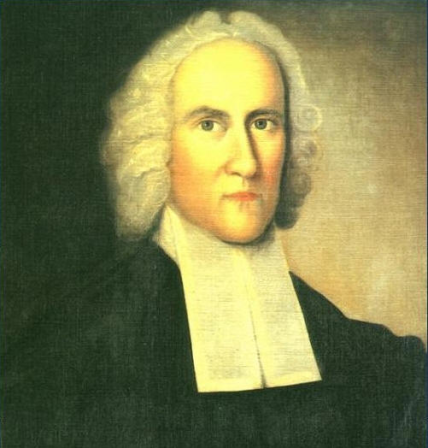
The God that holds you over the pit of hell, much as one holds a spider, or some loathsome insect, over the fire, abhors you, and is dreadfully provoked; his wrath towards you burns like fire; he looks upon you as worthy of nothing else, but to be cast into the fire; he is of purer eyes than to bear to have you in his sight; you are ten thousand times so abominable in his eyes as the most hateful venomous serpent is in ours. You have offended him infinitely more than ever a stubborn rebel did his prince: and yet ‘tis nothing but his hand that holds you from falling into the fire every moment…
Yes, that is Puritan preacher, Jonathan Edwards, with his classic sermon, “Sinners in the Hands of an Angry God.”
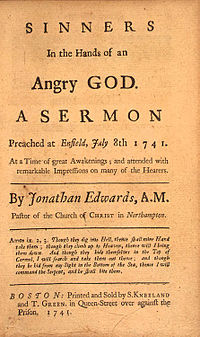
O sinner! Consider the fearful danger you are in: ‘tis a great furnace of wrath, a wide and bottomless pit, full of the fire of wrath, that you are held over in the hand of that God, whose wrath is provoked and incensed as much against you as against many of the damned in hell; you hang by a slender thread, with the flames of divine wrath flashing about it, and ready every moment to singe it, and burn it asunder; and you have no interest in any mediator, and nothing to lay hold of to save yourself, nothing to keep off the flames of wrath, nothing of your own, nothing that you ever have done, nothing that you can do, to induce God to spare you one moment.
It was Edward’s custom to read his sermons, instead of speaking extemporaneously. So the text of this famous sermon was afterwards published. It spread far and wide throughout Colonial America, and thus is still available to us today.
Notice that in Edward’s famous sermon he referred to his listeners as “sinners.” Don’t assume he was speaking in an evangelistic campaign to the public, to an audience of heathens drug from nearby saloons.
…The wrath of almighty God is now undoubtedly hanging over great part of this congregation: let everyone fly out of Sodom. Haste and escape for your lives, look not behind you, escape to the mountain, lest you be consumed [Genesis 19:17].
This sermon was given not to the public, but to his own congregation in Norhthampton, and a month later to a church congregation in Enfield, Connecticut, invited there by the church’s pastor. It was there that an eyewitness reported an “audience so moved by the sermon that people moaned, shrieked, and cried out for salvation while the preacher was speaking.”
So whatever view we may have 250+ years later of the godliness and purity of the Puritans, Jonathan Edwards seemed to think that there was a LOT of hanky-panky going on right within his own congregation!
The bottom line of all this—even in the purest of Puritan Colonial New England, all was not a moral utopia.
No, I really would have no interest in trading my 21st century life to time-travel back to Colonial America in hopes of living a Leave it To Beaver/Father Knows Best/Little House on the Prairie life. As an “older woman” I’m not particularly impressed with this actual advice below from Ben Franklin to a friend who asked about “taking a mistress” to meet the problem of sexual desires. Admittedly, Ben first suggested that his friend get married to deal with the problem. But he didn’t hesitate to then give him advice on what to do if he wasn’t ready for a “permanent commitment” quite yet:
Advice to a Young Man on the Choice of a Mistress (1745)
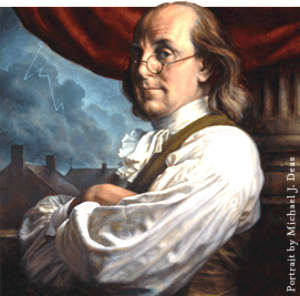
…But if you will not take this Counsel, and persist in thinking a Commerce with the Sex inevitable, then I repeat my former Advice, that in all your Amours you should prefer old Women to young ones. You call this a Paradox, and demand my Reasons. They are these:
1. Because as they have more Knowledge of the World and their Minds are better stor’d with Observations, their Conversation is more improving and more lastingly agreable.
2. Because when Women cease to be handsome, they study to be good. To maintain their Influence over Men, they supply the Diminution of Beauty by an Augmentation of Utility. They learn to do a 1000 Services small and great, and are the most tender and useful of all Friends when you are sick. Thus they continue amiable. And hence there is hardly such a thing to be found as an old Woman who is not a good Woman.
3. Because there is no hazard of Children, which irregularly produc’d may be attended with much Inconvenience.
4. Because thro’ more Experience, they are more prudent and discreet in conducting an Intrigue to prevent Suspicion. The Commerce with them is therefore safer with regard to your Reputation. And with regard to theirs, if the Affair should happen to be known, considerate People might be rather inclin’d to excuse an old Woman who would kindly take care of a young Man, form his Manners by her good Counsels, and prevent his ruining his Health and Fortune among mercenary Prostitutes.
5. Because in every Animal that walks upright, the Deficiency of the Fluids that fill the Muscles appears first in the highest Part: The Face first grows lank and wrinkled; then the Neck; then the Breast and Arms; the lower Parts continuing to the last as plump as ever: So that covering all above with a Basket, and regarding only what is below the Girdle, it is impossible of two Women to know an old from a young one. And as in the dark all Cats are grey, the Pleasure of corporal Enjoyment with an old Woman is at least equal, and frequently superior, every Knack being by Practice capable of Improvement.
6. Because the Sin is less. The debauching a Virgin may be her Ruin, and make her for Life unhappy.
7. Because the Compunction is less. The having made a young Girl miserable may give you frequent bitter Reflections; none of which can attend the making an old Woman happy.
8thly and Lastly They are so grateful!!
Now mind you, Franklin himself was married. And although, particularly after the death of his wife, he was “rumored” to be promiscuous, and he traveled in circles frequented by openly promiscuous men, it isn’t a certainty that he gave this advice based on personal experience. But let’s face it … the very fact that a piece such as this could be publically published in the mid-1700s, without a huge uproar that it was scandalous, and a heated condemnation of Franklin as an immoral reprobate, seems to me to be evidence that what it describes is a “common attitude” among men of the time. Including among some of the “Founding Fathers.”
Then there was the incidence of premarital sex, which many folks seem to think is somehow “unique” to the past half century or less.
From a Genealogy forum:
I am afraid I can’t cite the source (something like Natural History, Smithsonian, or such) about five-to-eight years ago had an article that might be relevant to the discussion about age of marriage and first pregnancy. It included a summary of the diary of a midwife from the time of the American Revolution. If I remember correctly, about 40% of women’s first-born children were born significantly before nine months of marital bliss. The gist of the article, I believe, was that Americans 200 years ago—although they may have talked against it—commonly practiced pre-marital sex. However, once the girl/woman became pregnant, it was assumed that they would wed. It is interesting to me, as an anthropologist, as an illustrative example of the distinction between what is called “ideal” and “real” culture, as well as for the amazingly revisionist history that likely takes place in all societies. If 40% of first-births were to women who were pregnant for some time at their marriage, then it is clear that far more than half of colonial era Americans engaged in premarital intercourse. Not that I am saying that I am shocked by this, or would castigate them, but that from two centuries beyond, we have Fabricated a false notion about sexuality, marriage and childbirth.
The book mentioned by this writer is Midwife’s Tale: The Life of Martha Ballard Based on Her Diary 1785-1812 by Laurel Thatcher Ulrich.
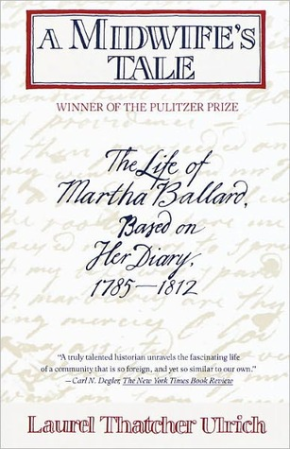
The diary of a midwife and herbalist reveals the prevalence of violence, crime and premarital sex in rural 18th-century New England. … Made into an American Experience video special by PBS.
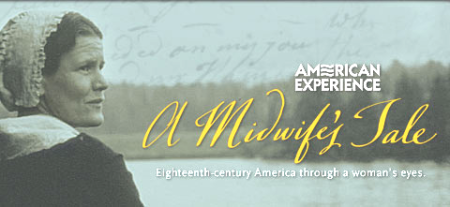
“In 1785, America was a rough and chaotic young nation, and Maine its remote northern frontier. That year, at the age of 50, Martha Ballard began the diary that she would keep for the next 27 years, until her death. At a time when fewer than half the women in America were literate, Ballard faithfully recorded the weather, her daily household tasks, her midwifery duties (she delivered close to a thousand babies), her medical practice, and countless incidents that reveal the turmoil of a new nation — dizzying social change, intense religious conflict, economic boom and bust — as well as the grim realities of disease, domestic violence, and debtor’s prison.”
So based on records of the 1000 or so babies Ballard delivered, at least in her area, something like half of the people engaged in premarital sex. Hardly our view of Early American society!
Further comments on that forum about illegitimate births in the Puritan period:
There’s also a paperback, called Lost Babes of Essex County, MA about town records involving early and illegitimate births. [1692-1745]
Comment: The interest of the town fathers in babies arriving out of turn was not prurient, but practical: they knew that illegitimate children and their mothers were far more likely than others to need financial help from the town. The town fathers weren’t prepared to put up with deadbeat dads; fathers of illegitimate children were required to support their children until they were seven or eight—old enough to be apprenticed to a trade. Consequently, a pregnant spinster (or even a married woman whose husband hadn’t been in town recently) was required to make a statement about the paternity of the child. If she refused, she [the midwife] was required to return again and again, and the midwife was required to demand the information when the woman was in labor, on the theory she [the mother] wouldn’t be able to lie then. Many such statements recorded by these town fathers are explicit about the name, date, place, and circumstances surrounding the conception of the baby—a real eye-opener for descendants to read.
Second comment: If your girl became pregnant before marriage, the town fathers “encouraged” the two of you to marry right away. The New England fine was forty shillings each, unless the midwife testified that the baby was small and undeveloped—OBVIOUSLY a seven-months child. But the Lost Babes book commented that in an era where divorce was for all practical purposes nonexistent and children supremely important, couples may also have decided it was worth eighty shillings to assure their mutual fertility before marrying. (I blush to confess that I have one late eighteenth-century ancestor who married four times—and only his last wife, being past it, was NOT pregnant at the time of the marriage.)
Again, I suppose this ONE town in Massachusetts could have been a complete aberration for that time period, but I highly doubt it.
So what does all this anecdotal evidence indicate? No, it doesn’t “prove” that society in the colonial era was “as corrupt” as society today. What it does show is that human nature hasn’t basically changed. The cumulative effect of two and a half centuries of changes in technology, living conditions (moving from primarily rural and agricultural to primarily urban and industrial), access to improved communications, and more, has made some segments of our society more openly “sinful.” Yes, “dirty talk” on TV is now more blatant than ever. Yes, those looking for porn on the Internet can instantly find photos and movies of gross sexual immorality, in a way that wouldn’t have been available to folks in the past. But even those Puritan boys were already primed to sneak a peek at Midwive’s Manuals and have a “prurient interest” in them!
I am highly suspicious if a time traveler from the future would have shown up with a computer full of hardcore porn pics in 1739 Northampton, and would have taken some young fellows … and their dads … out back of Jonathan Edwards’ Congregational church to have a peek … almost none of them would have gasped and turned away in disgust. They would have crowded in closer and asked for a chance to click the mouse to show the close-ups. Willing to risk the chastisement of Edwards and his threats of God’s wrath…just to see salacious pics o’ nekkid ladies.
I guess I could keep going, back to the landing of Columbus in the Americas, but I don’t believe that is necessary. The reality is that America has always had good and bad, sexual morality and sexual immorality, righteousness and evil, greed and generosity, kindness and cruelty. There is no evidence that our 21st century society is somehow uniquely despicable in God’s eyes, as “bad as Sodom and Gomorrah,” and He must therefore be planning to intervene in the immediate future by sending Jesus back to set up the Kingdom.
The next installment of this blog series will explore the implications of this reality, especially for those Americans who consider themselves Evangelical Christians:

